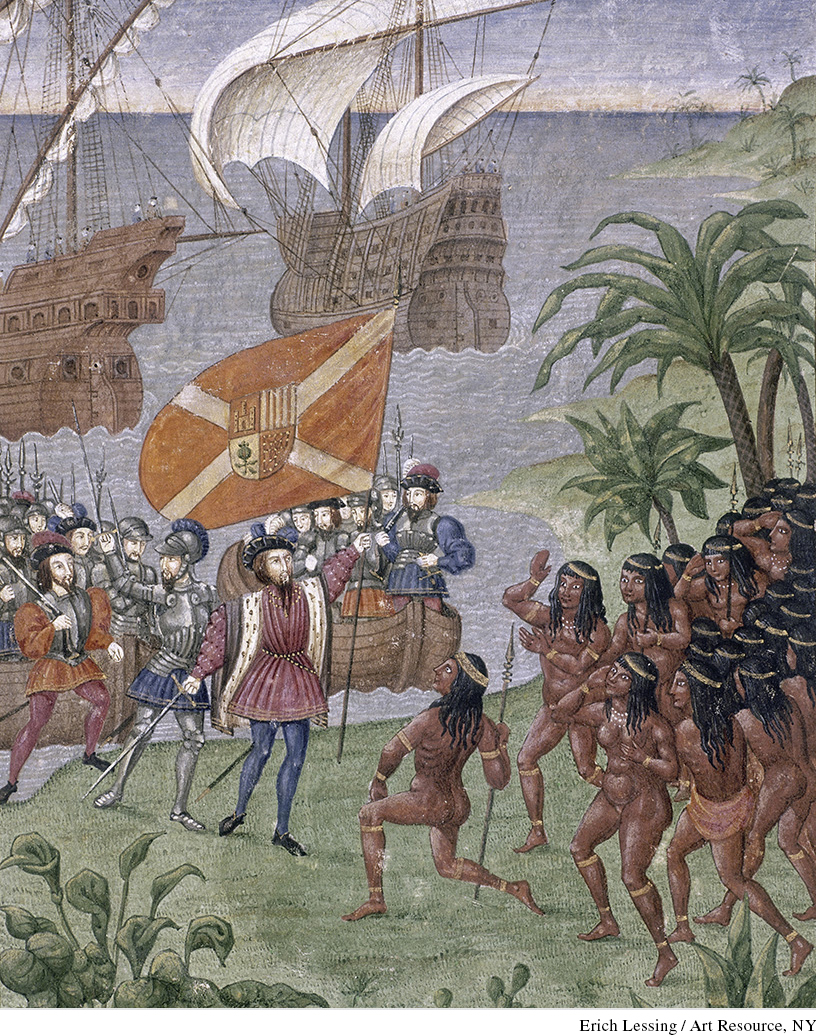Introduction for Chapter 14
Printed Page 440
Important Events
IN 1539 IN TLAXCALA, NEW SPAIN (present-day Mexico), Indians newly converted to Christianity performed a pageant organized by Catholic missionaries. It featured a combined Spanish and Indian army fighting to protect the pope, defeat the Muslims, and win control of the holy city of Jerusalem. In the play, after a miracle saves the Christian soldiers, the Muslims give up and convert to Christianity. Although it is hard to imagine what the Indians made of this celebration of places and people far away, the event reveals a great deal about the Europeans: the Catholic missionaries hoped that their success in converting Indians in the New World signaled God’s favor for Catholicism the world over.
Led first by the Portuguese and then Spanish explorers, Europeans sailed into contact with peoples and cultures previously unknown to them. European voyagers subjugated native peoples, declared their control over vast new lands, and established a new system of slavery linking Africa and the New World. Millions of Indians died of diseases unknowingly imported by the Europeans. The discovery of new crops—corn, potatoes, tobacco, and cocoa—and of gold and silver mines brought new patterns of consumption, and new objects of conflict, to Europe. Historians now call this momentous spiral of changes in ecology, agriculture, and social patterns the Columbian exchange, after Christopher Columbus, who started the process.
While the Spanish were converting Indians in the New World, a different kind of challenge confronted the Catholic church in central and western Europe. Religious reformers attacked the leadership of the pope in Rome and formed competing groups of Protestants (so-called because they protested against some beliefs of the Catholic church). The movement began when the German Catholic monk Martin Luther criticized the sale of indulgences in 1517. Other reformers raised their voices, too, but did not agree with the Lutherans. Before long, religious division engulfed the German states and reached into Switzerland, France, and England. In response, Catholics undertook their own renewal, which strengthened the Catholic church. Catholic missionaries continued to dominate efforts to convert indigenous peoples for a century or more.
CHAPTER FOCUS How did the conquest of the New World and the Protestant Reformation transform European governments and societies in this era?
These two new factors—the development of overseas colonies and divisions between Catholics and Protestants within Europe—reshaped the long-standing rivalries between princes and determined the course of European history for several generations.